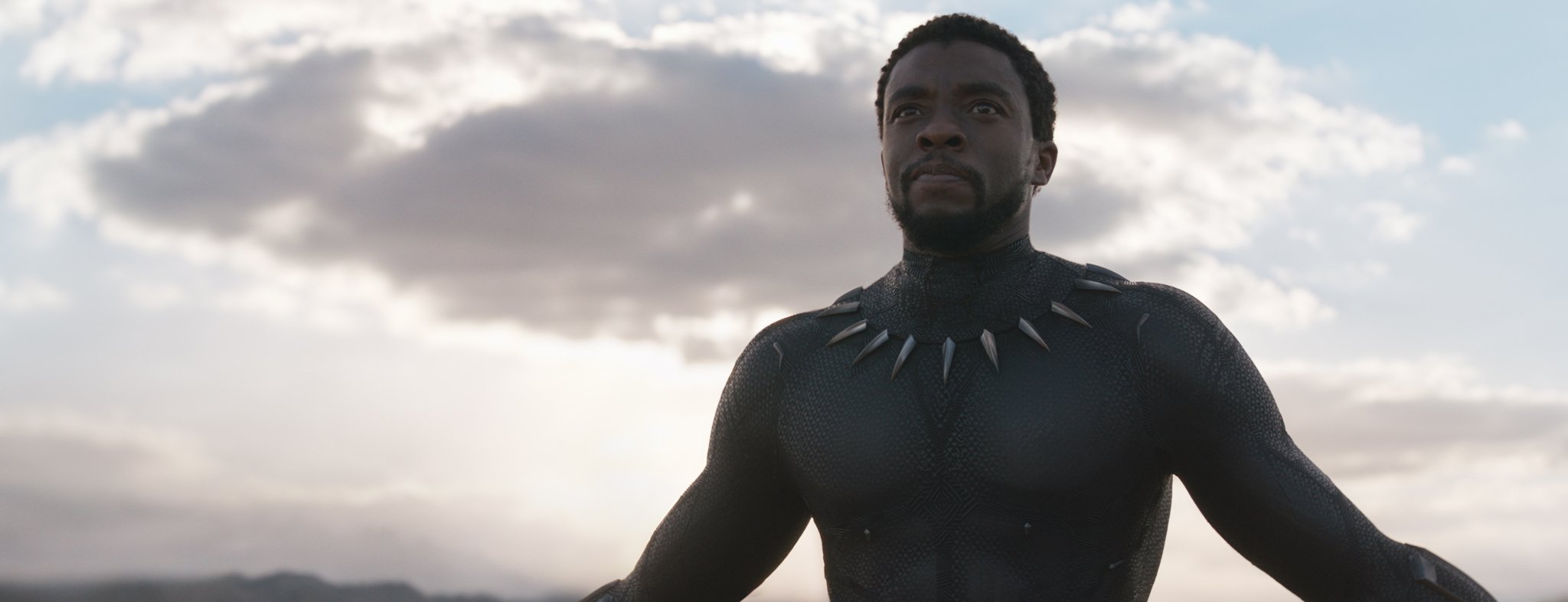
Black Panther: Warrior King
Rachel Morrison, ASC focuses on the humanity at the heart of the action-packed Marvel adventure hit.
Unit photography by Matt Kennedy, courtesy of Marvel Studios.
Somewhere in Africa sits the hidden, secretive kingdom of Wakanda, which is rumored to be the richest and most technologically advanced nation on the planet thanks to its massive deposits of vibranium, a rare meteoric ore with energy-manipulating qualities. Another legend tells of the ancient Black Panther cult and its chieftain-king, the Black Panther himself, who for centuries have fiercely protected Wakanda’s culture and resources.
Directed by Ryan Coogler and photographed by Rachel Morrison, ASC, Marvel Studios’ Black Panther picks up after the death of Wakanda’s isolationist King T’Chaka (John Kani) during the events of Captain America: Civil War (AC June ’16). T’Chaka’s son T’Challa (Chadwick Boseman), the current Black Panther, returns home to take his rightful place on the throne, but his rule is contested by Erik Stevens, aka Killmonger (Michael B. Jordan), a powerful rival who emerges from hiding to seize Wakanda’s vast natural wealth and — with the help of South African arms dealer Ulysses Klaue (Andy Serkis) — use it to conquer the world. Faced with danger on all sides, T’Challa must team up with CIA agent Everett K. Ross (Martin Freeman) and the Dora Milaje — Wakanda’s all-female special-forces team — to defeat his enemies and preserve his people’s way of life.
"When Ryan said he was going to do Black Panther, I immediately knew it wasn’t going to be a superhero movie in the traditional sense,” says Morrison. “There would be a more powerful message behind it. The film wants to challenge the audience to think about how we treat not only our neighbors, but people from all over the world.”
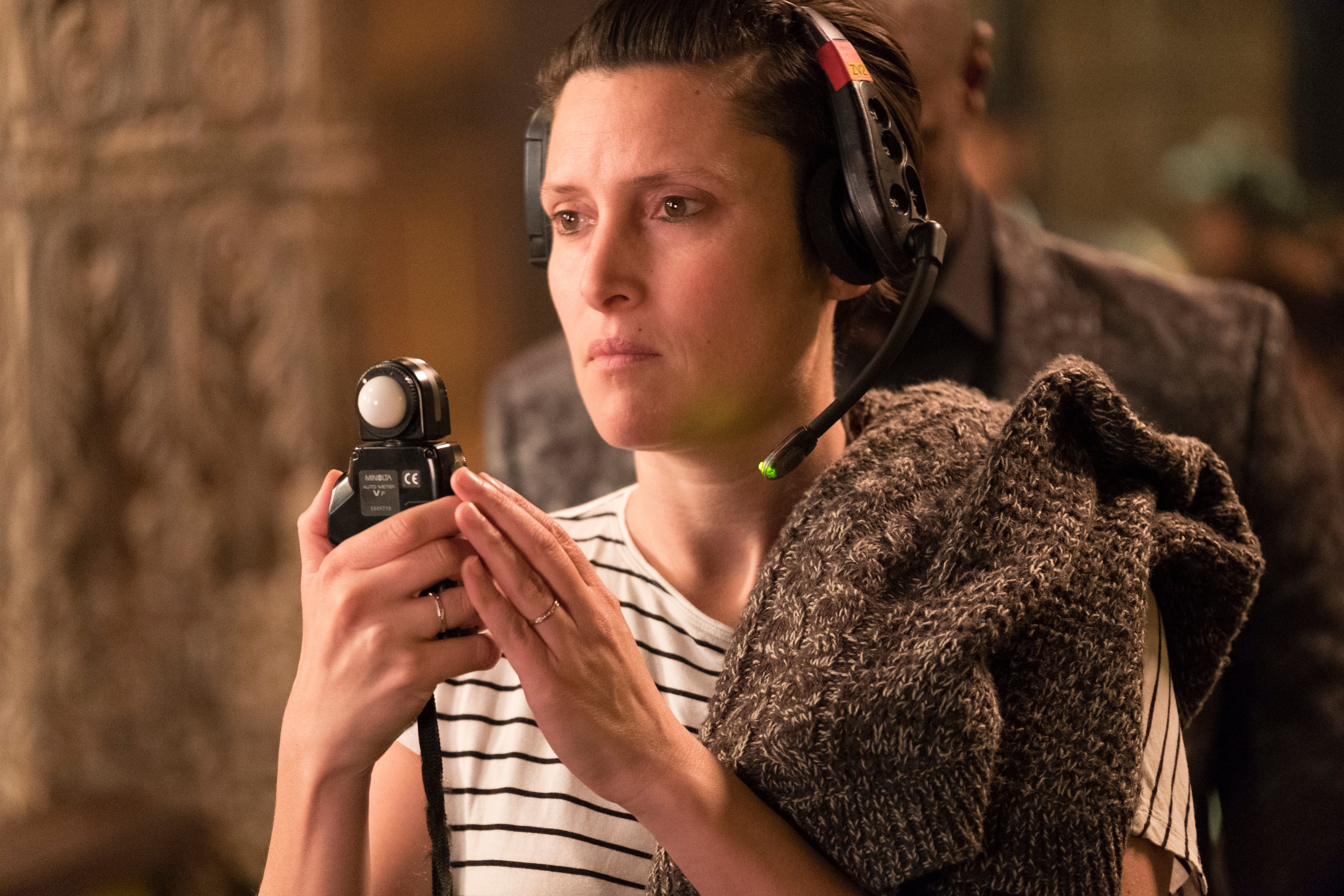
The film’s people-oriented focus was one of the things that attracted Morrison to the script, which was penned by Coogler and co-writer Joe Robert Cole. “I’m much more affected by stories that are grounded in humanity, and what I like about this film is that it’s not about aliens and it doesn’t go off into space,” the cinematographer remarks. “It’s about real people, and it’s set in this world.”
Morrison and Coogler first collaborated on the independent feature Fruitvale Station (AC April ’13), which told a very real story about the 2009 shooting death of Oscar Grant by a BART police officer in Oakland, Calif. “It never occurred to me then that we would one day make a superhero film,” the cinematographer muses. “Now that I know Ryan better, it makes perfect sense. Graphic novels, comic books and superhero films were always in his DNA, even if they weren’t in mine. What we have in common is a desire to challenge ourselves.”
Having steered clear of superhero and effects-heavy projects prior to Black Panther, Morrison was faced with a mountain of technical prep before starting her work on the production. As she relates, her first bit of homework involved catching up on all of Marvel’s movies, after which she sought the advice of cinematographers who had photographed features on that scale — such as Ben Davis, BSC, who was behind the camera for Guardians of the Galaxy (AC Sept. ’14), Avengers: Age of Ultron (AC June ’15) and Doctor Strange, as well as Trent Opaloch, who shot Captain America: The Winter Soldier, Captain America: Civil War (AC June ’16) and the upcoming Avengers: Infinity War.
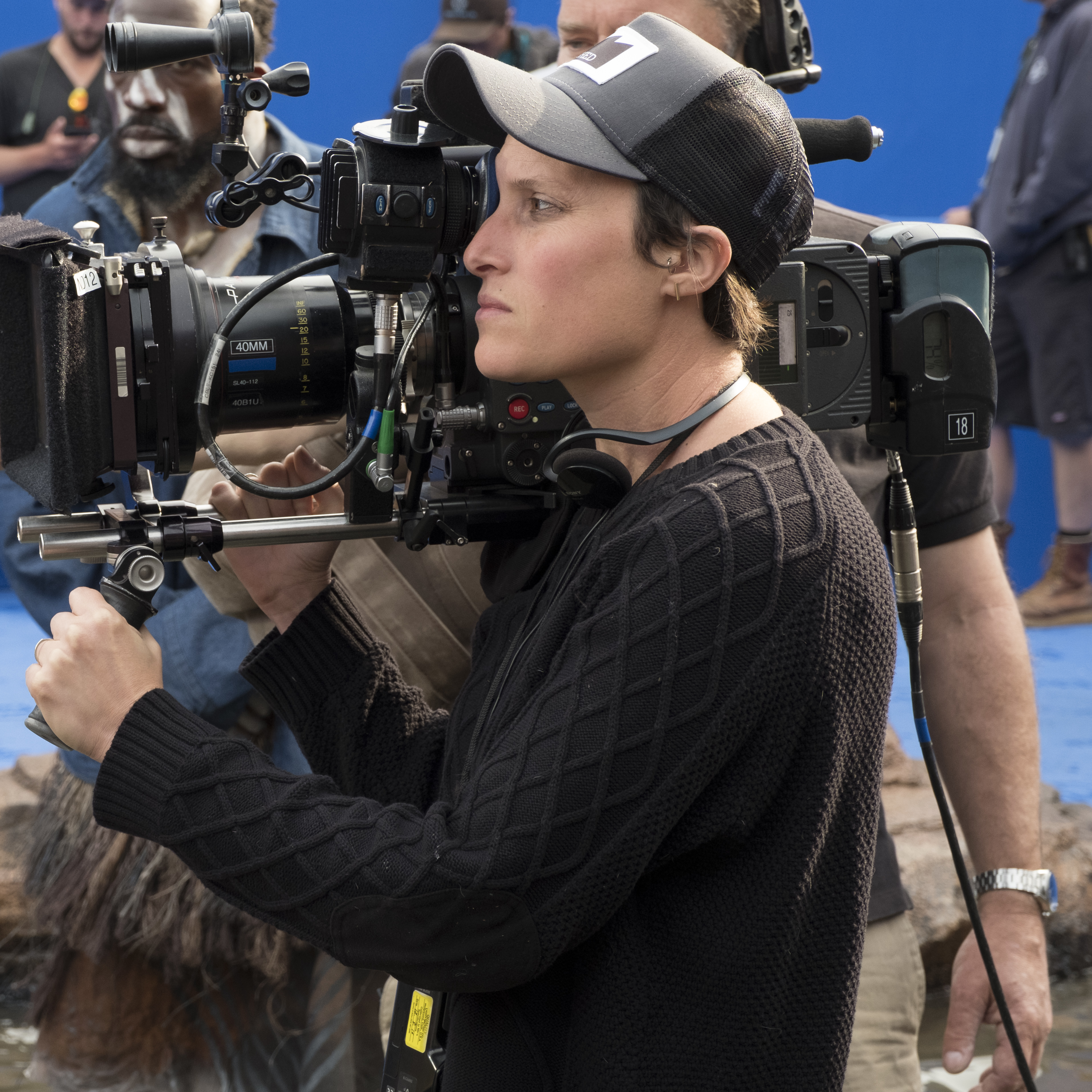
“One of the things I figured out quickly is that no two large-scale movies are the same, and no two visual-effects-heavy films are the same,” Morrison relates. “Within the visual-effects world, Marvel does things very differently than DC or Lucasfilm.”
She also worked closely with Victoria Alonso, Marvel’s executive vice president of physical production, and with visual-effects supervisor Geoffrey Baumann, who oversaw a team of 16 visual-effects vendors tasked with creating everything from full CG environments to performing simple retimes, frame drops, and morphs. Baumann provided Morrison with before-and-after composites from various Marvel films to help her understand what was accomplished on set versus in post. “Even in the Marvel sandbox there are a couple of different ways you can approach a scene,” Morrison reveals. “Between Geoff, Ryan, production designer Hannah Beachler and me, there was a collective approach to the decision-making process.”
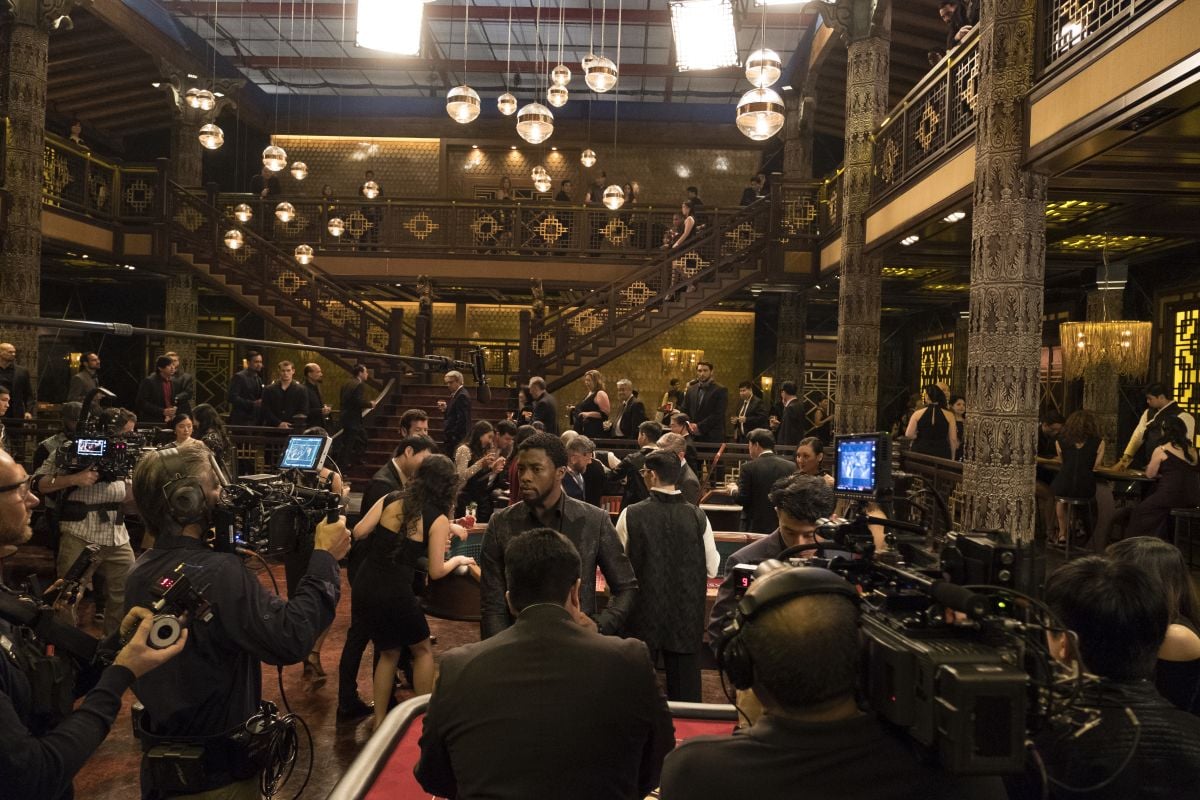
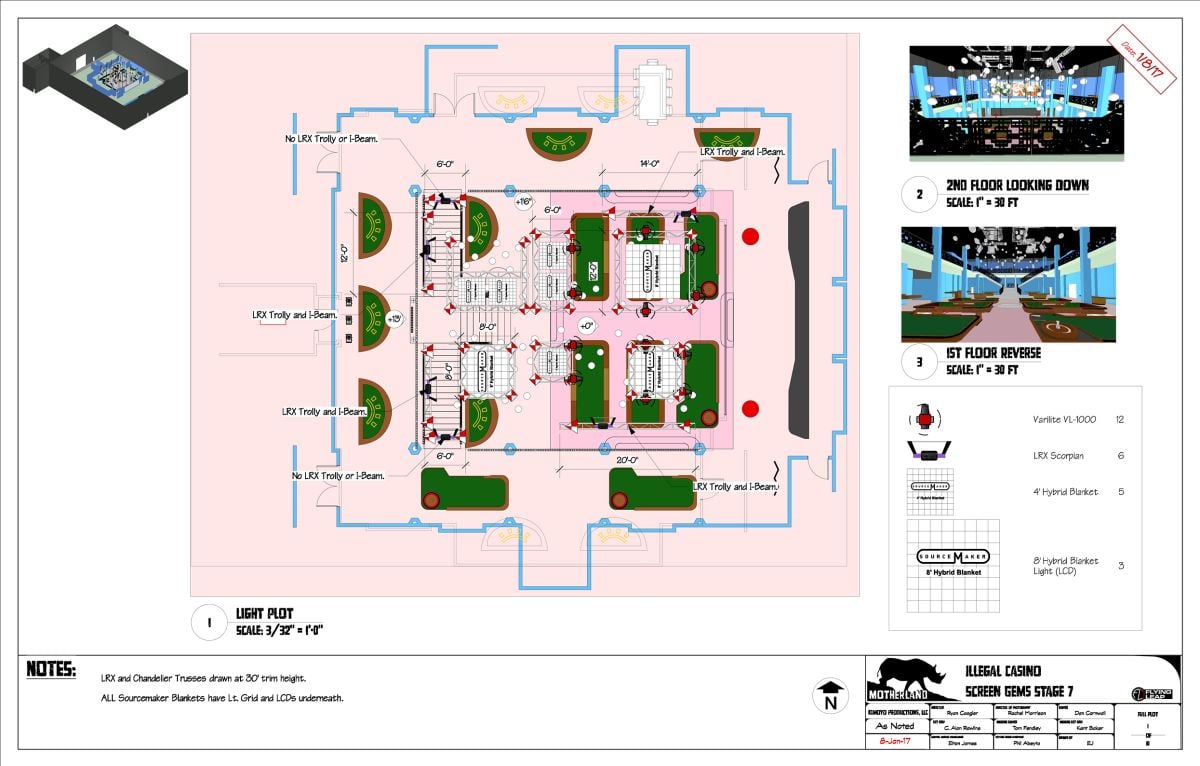
When it came to deciding the origination format, Coogler and Morrison tested every option, including film. Ultimately, for expediency in post, the decision was made to capture primarily in 3.4K ArriRaw with Arri’s Alexa XT camera, which Morrison paired with Panavision Primo spherical primes and zooms. For any lenses that didn’t cover the XT’s Open Gate frame, specifically the 14.5mm and 17.5mm focal lengths, Morrison replaced the standard Primos with their updated, digitally adjusted Primo V equivalents. The production also carried a 1.13x V Expander, which increased the image circle of those aforementioned wide lenses — as well as the image circle of the 19-90mm T2.8 PCZ and 24-275mm T2.8 SLZ11 zooms — to a 33.5mm diagonal image.
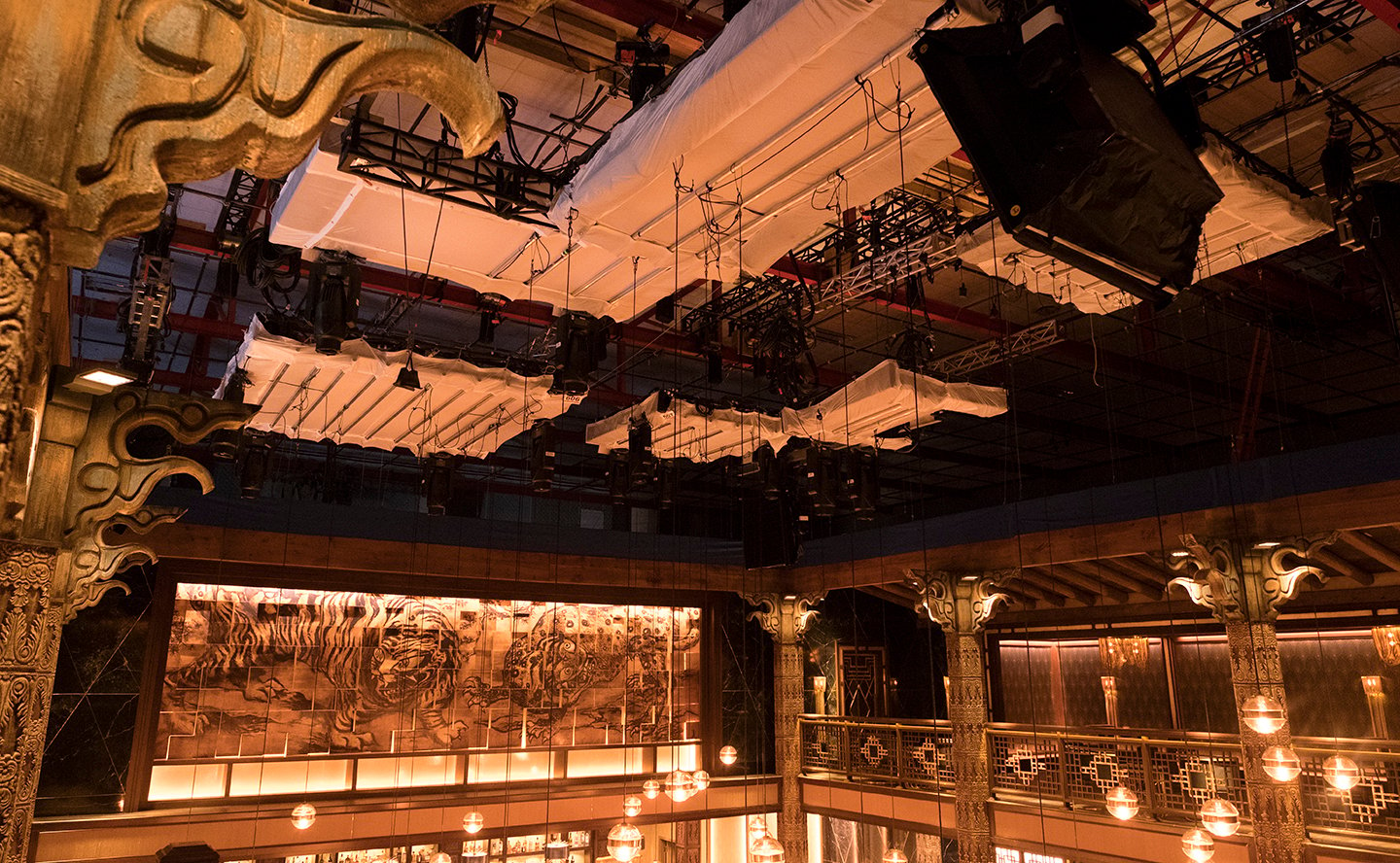
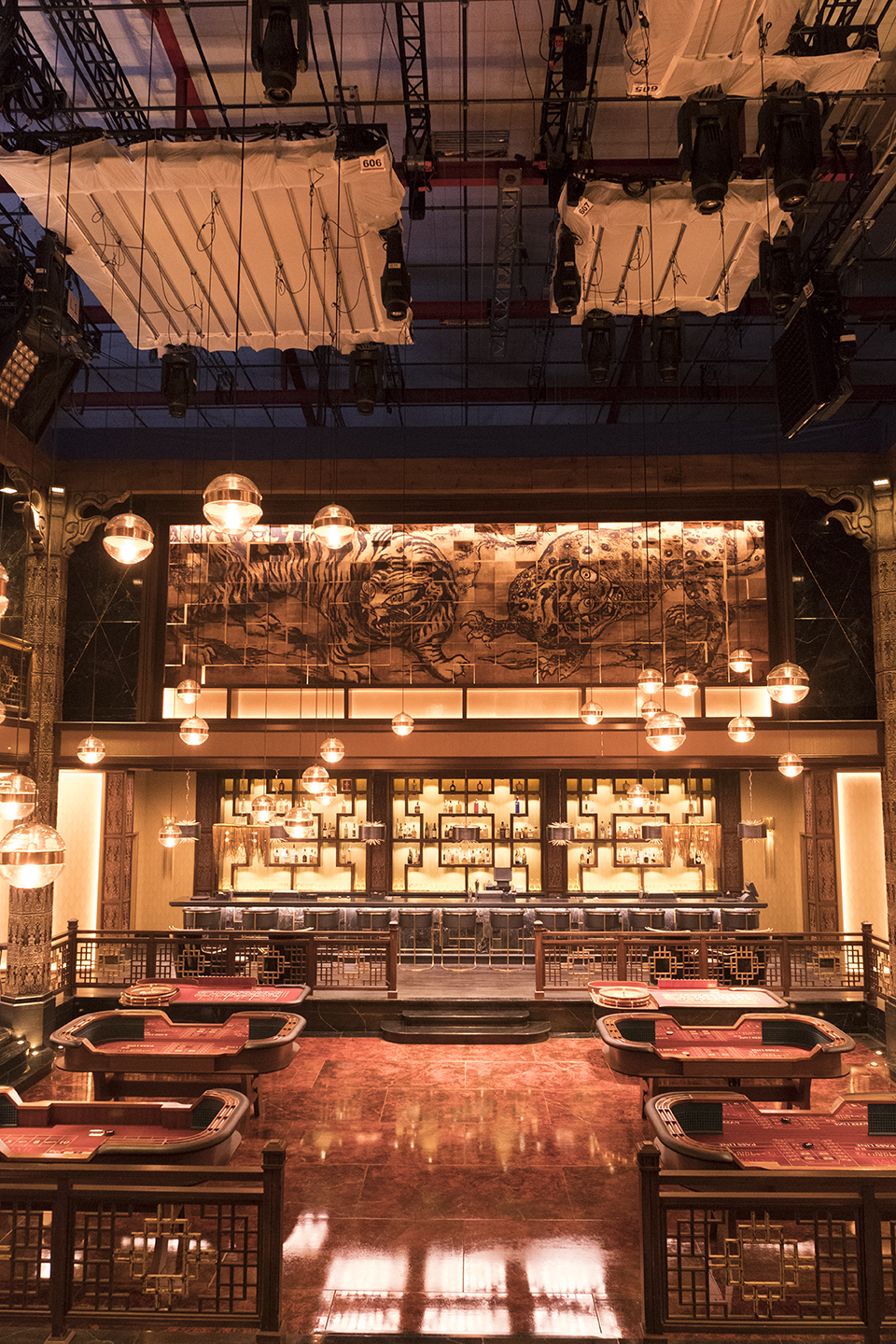
The production framed for a 2.39:1 final release while also protecting for a 1.9:1 Imax frame. “The last four or five films I shot were anamorphic, and I was interested in anamorphic for this, but because Ryan had only shot spherical and there was such a huge learning curve for everything else on the show, he asked that we stick with a lens format that he knew well, and I happily obliged,” Morrison explains.
“One of the reasons we went with the XT’s Open Gate sensor over the Alexa 65 was that Ryan wanted things to be in-focus in the background,” she continues. “Not Citizen Kane deep, but his perspective was that our sense of scale came from being able to see all the beautiful sets and costumes.”

Morrison and Coogler also employed Arri’s Alexa Mini to help expand the intimate, character-oriented visual language they had employed on Fruitvale Station. For Coogler, bringing that style to Black Panther’s epic canvas meant taking a personal, subjective approach to staging each scene; for Morrison, it meant drawing upon her background as a documentary cameraperson. “Documentaries are a great training ground for shooting from the gut and the heart,” she notes. “We really wanted there to be a humanity to our film, so the approach was almost single-camera, to get really tight eyelines and move with the characters, to be very experiential with the camerawork, and to create something intimate but with scope.”
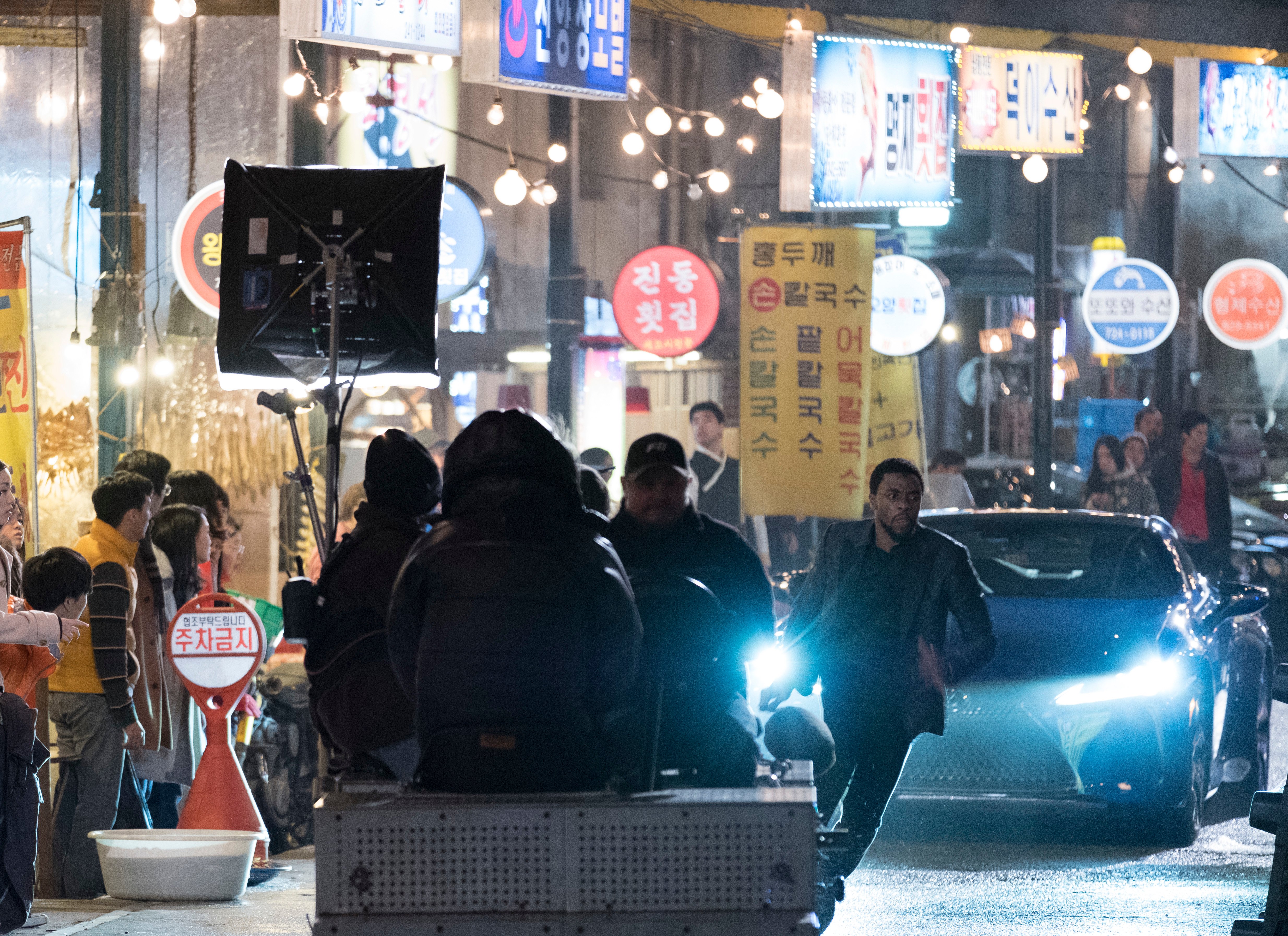
The story takes its characters to a number of real-world locales, including New York, London and Busan. While the production did travel to the latter city in South Korea, the bulk of the movie was actually photographed in and around Atlanta, Ga., where the fictitious nation of Wakanda was shaped from scratch.
“One of the downsides of working on location so often is that you don’t always get to work with the same crew or develop a shorthand,” says Morrison. “The upshot of that is you get to meet many incredibly talented people.” In Atlanta, Morrison worked with local gaffer Dan Cornwall and key grip C. Alan Rawlins, who brought a trusted local crew to fill out the production’s massive roster. First AC Zoran Veselic and 2nd AC Craig Bauer — both of whom had previously worked with Morrison on Cake and Confirmation — were distant hires out of Los Angeles.
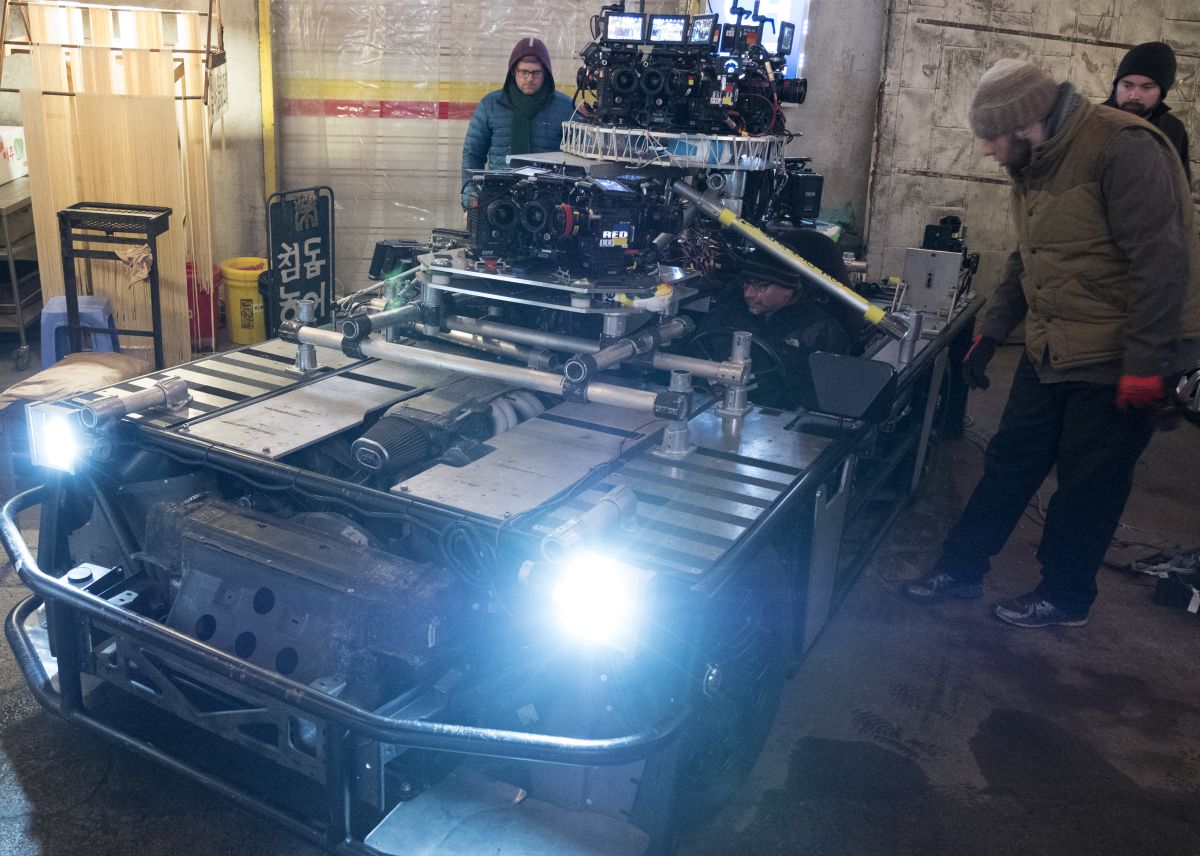
Morrison and her collaborators were given a wide berth to flex their creative muscles within the boundaries of the Marvel Cinematic Universe. “The studio was very supportive of Ryan’s vision,” she reports. “They didn’t give us any guidelines for exposure or contrast or anything like that. We weren’t married to the previs. There were a few fundamental ‘superhero’ rules we followed, like the way certain characters should be shot from a lower-than-the-eye level to give them more weight and power, but that’s not even from the Marvel playbook — it just makes sense.”
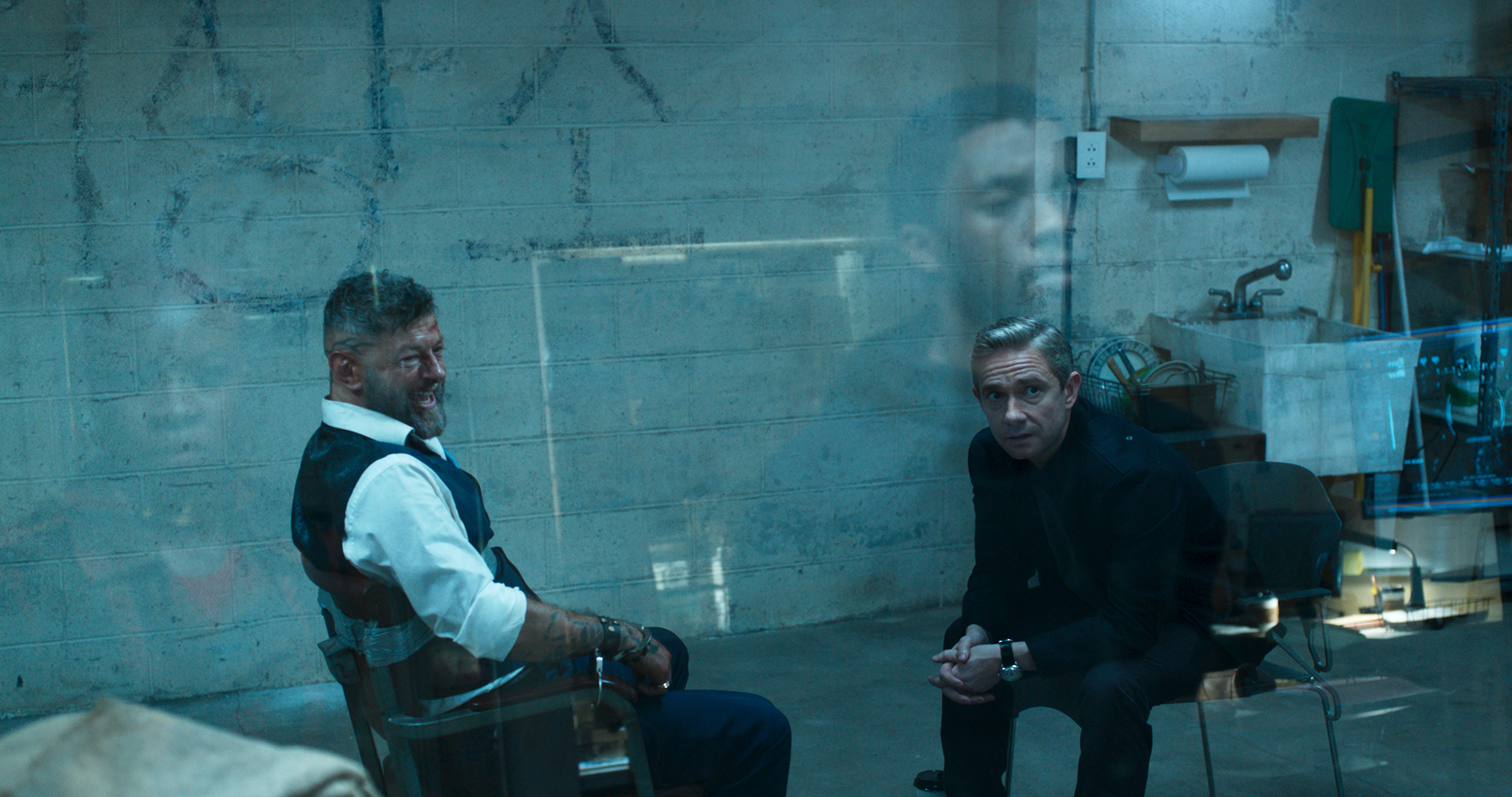
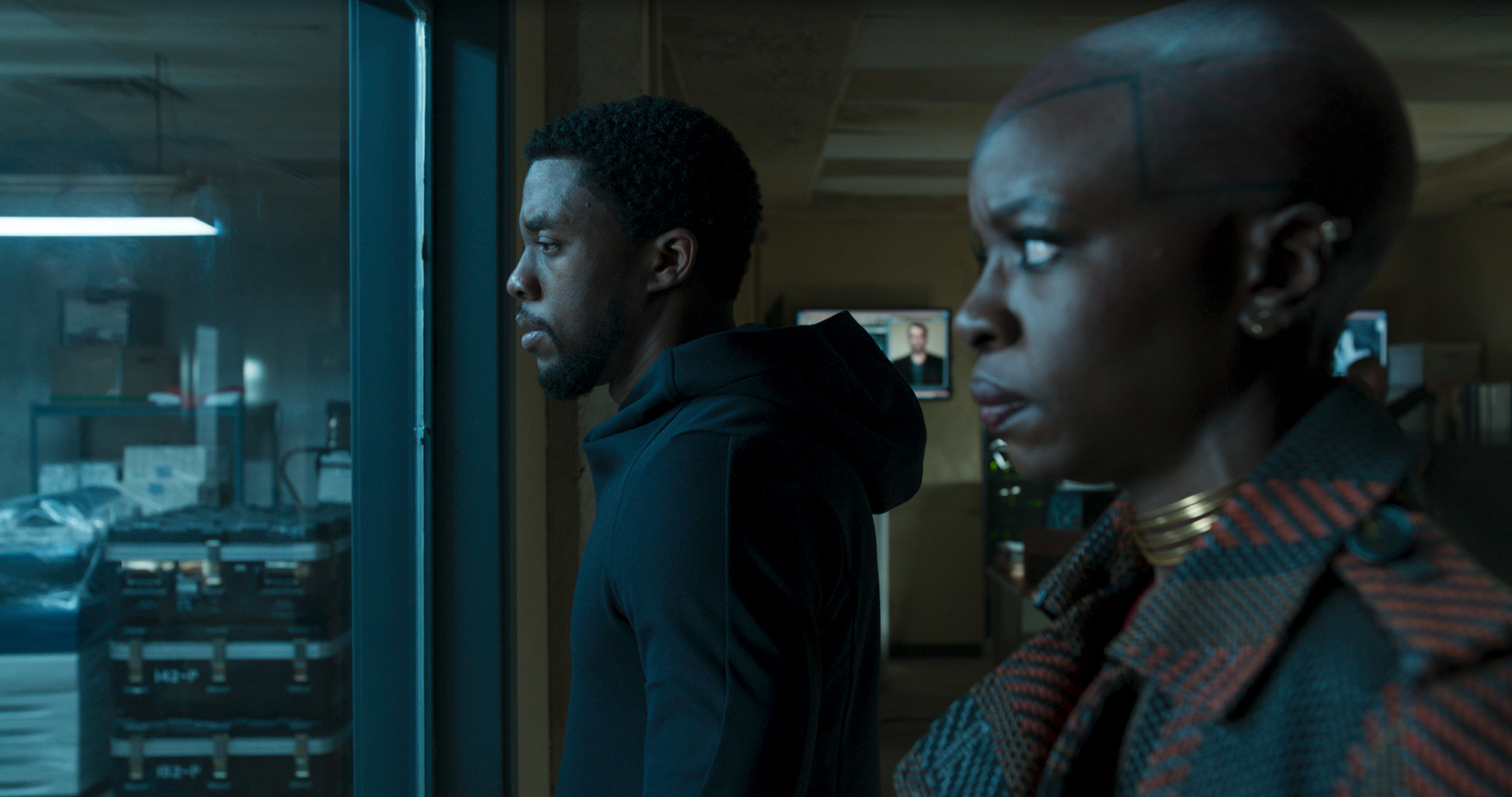
For grand-scale visual reference, the filmmakers studied the BBC’s Planet Earth documentary series, Ron Fricke’s Baraka and Samsara (AC Sept. ’12), and Terrence Malick’s The New World (AC Jan. ’06). They watched movies about families, like The Godfather, and revisited the intimate, subjective camerawork of one of Coogler’s cinematic inspirations, A Prophet (AC March ’10). They even looked at the Chef’s Table episode that features Alex Atala. As for other superhero films, “If there was one that we aspired to, it would probably be The Dark Knight [AC July ’08], in the way it conveys a humanism on a large scale,” says Morrison. She provided Beachler and costume designer Ruth Carter with a photographic look book incorporating examples of deep light shafts, contrasts and color saturations, and in return Beachler and Carter shared their palettes and textures.
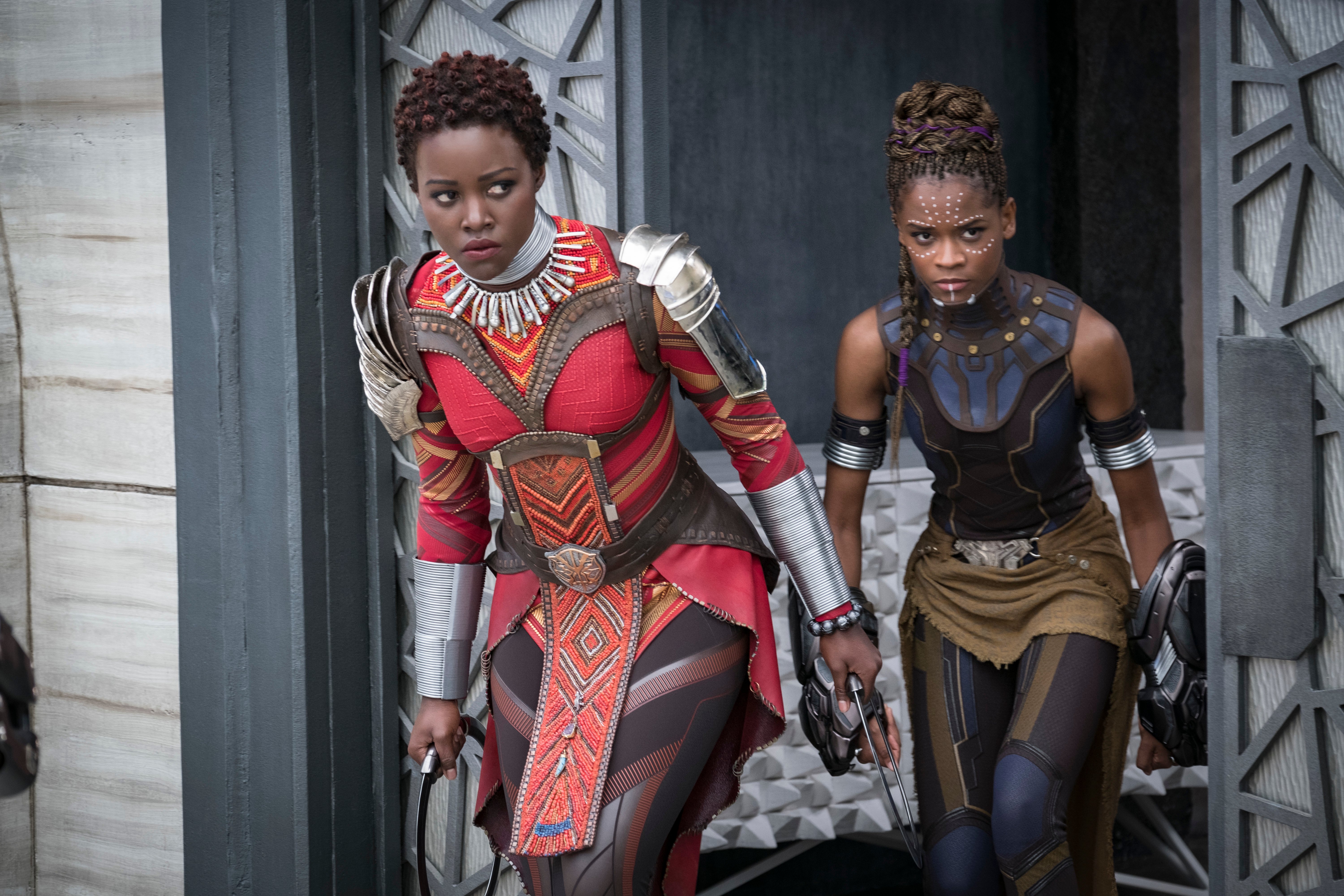
In bringing Wakanda to life, the filmmakers considered the fictional country’s geographical location, architecture, light, fashion and culture. Afrofuturism, an aesthetic and philosophy addressing the themes and concerns of the African diaspora through a perspective of technology and science-fiction, played an important role in the film’s design, impacting everything from color palettes to the geographic orientation of the sets. Morrison points to Wakanda’s circular motifs as one example. “It had been decided long before I came along that the theme of Wakanda is circular, because everyone is the same distance from the center; everyone is equal,” she explains.

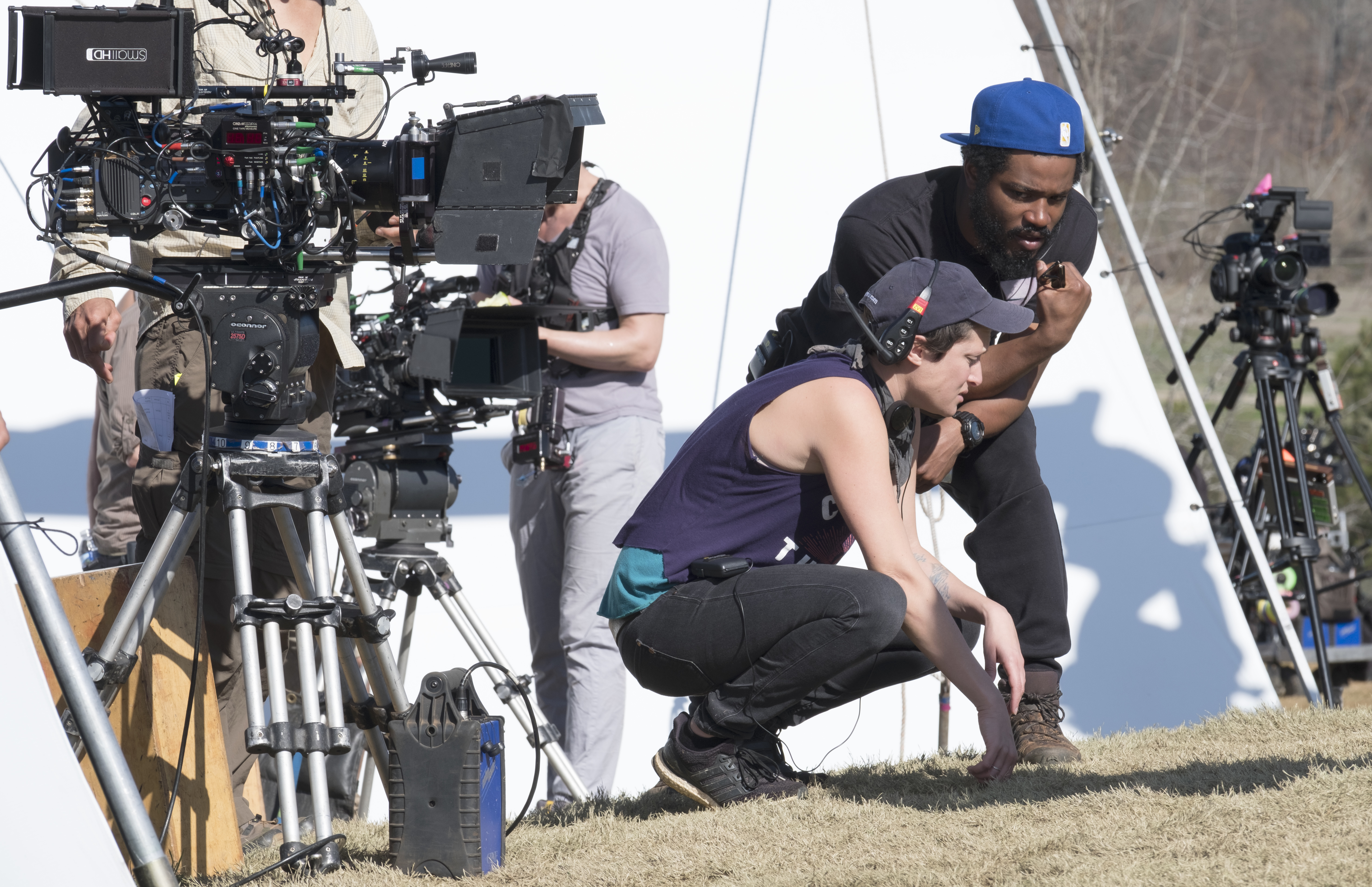
Though Wakandan society operates on hyper-advanced technologies, its cultural identity is rooted in the body and spirit. Morrison adds, “It’s not a poor country with iPhones. It’s a rich country that chooses to walk barefoot on the Earth.”
This connection to nature is paralleled in Morrison’s naturalistic approach to lighting, which has its roots in her documentary experience. “It’s about motivation,” she says. “The lighting should feel like it’s coming from somewhere, whether it’s a practical, the sun or a burning fire. It should make sense on a subconscious level in order to maintain the suspension of disbelief.”

The filmmakers wanted the sunlight to feel the same all across Wakanda, and to feel warmer than the neutral light in the United States and the cool, overcast light in London. Shooting mostly at ISO 800 — “I wanted to rate at 1,280 for a bit of digital grain, but visual effects requested no higher than 800 for comps,” the cinematographer notes — and at a stop between T2.8 and T4, Morrison would match her sources to a motivating source in the scene, a process that was significantly streamlined through the use of LEDs. “I used more LEDs on this show than ever before,” she attests. “Their flexibility is incredible. You can color-balance the light on set with very minute adjustments, so instead of having to grab a 1⁄8 Minus Green, you can just dial it in.”
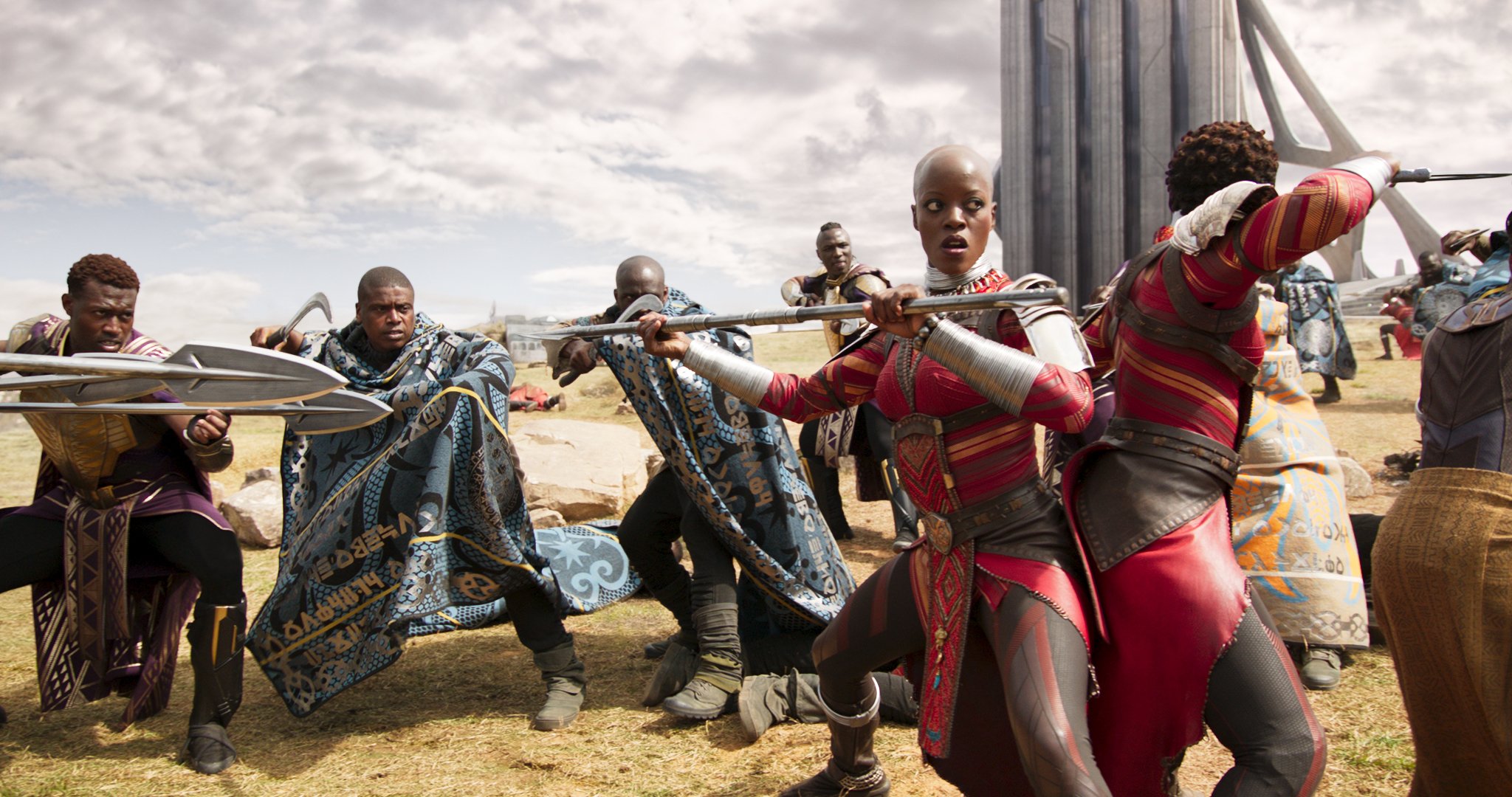
According to Cornwall, Arri SkyPanel S60-Cs, AadynTech Jab Variables, and Sourcemaker LED Blanket lights were used in some capacity every day on set. Morrison prefers to light from the side when shaping the actors’ faces, sometimes directly with 8'x8' Blanket lights, double-diffused through an 8'x8' or 12'x12' Grid Cloth and unbleached muslin to give the light a warm, earthy quality. “I love bounced light, but it takes up a lot of space when you start bouncing light into bigger frames,” she notes. “We did a ton of bounce for our exteriors — it was a total grip scene with one 18K.”
Many of the film’s elaborate sets, including the Wakandan High Council chamber, were built at EUE/Screen Gems Studios in Atlanta, while all of the film’s big exterior set work, including Wakanda’s Warrior Falls, was shot at the OFS fiber-optics plant north of the city.
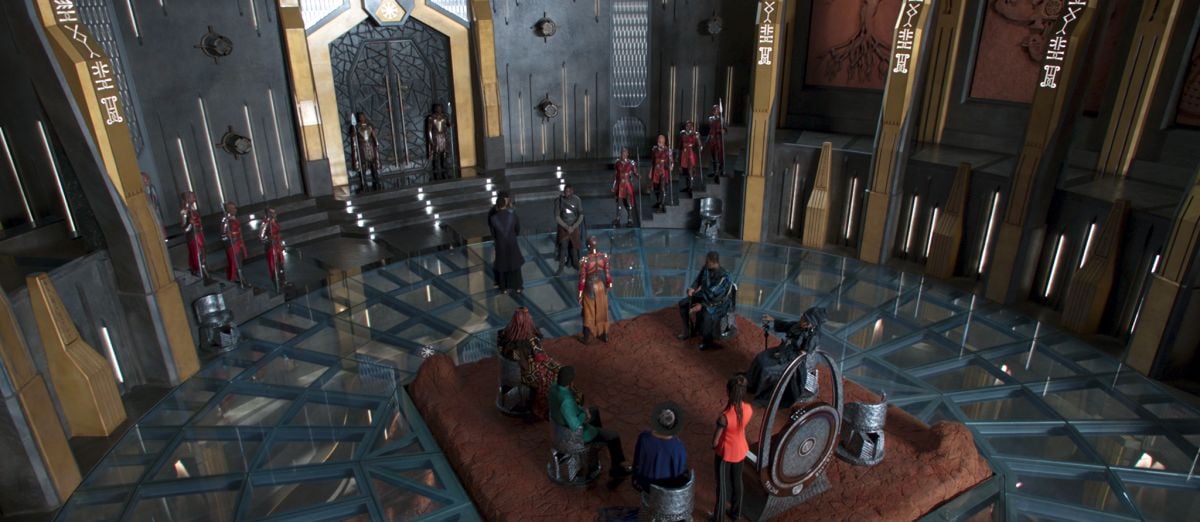
For the film’s opening and closing mano-a-mano fights at the massive Warrior Falls, where T’Challa must defend his right to the throne, Rawlins and rigging key grip Kent Baker blocked the sun with two 60' x 60' Ultrabounces hanging from 450- and 350-ton construction cranes, with 16 30' x 30' bluescreens surrounding the set; when winds rose above 15 mph, 20' x 20' flyswatters on condors were used instead of the Ultrabounces. Morrison tracked the sun and shot for backlight, augmenting with four LRX Single PARs and two 15-light Bebees. Cornwall notes, “I chose the Bebee Night Light because it can work both as a strong sun source or, with an added diffusion frame, it can be a large soft source.”

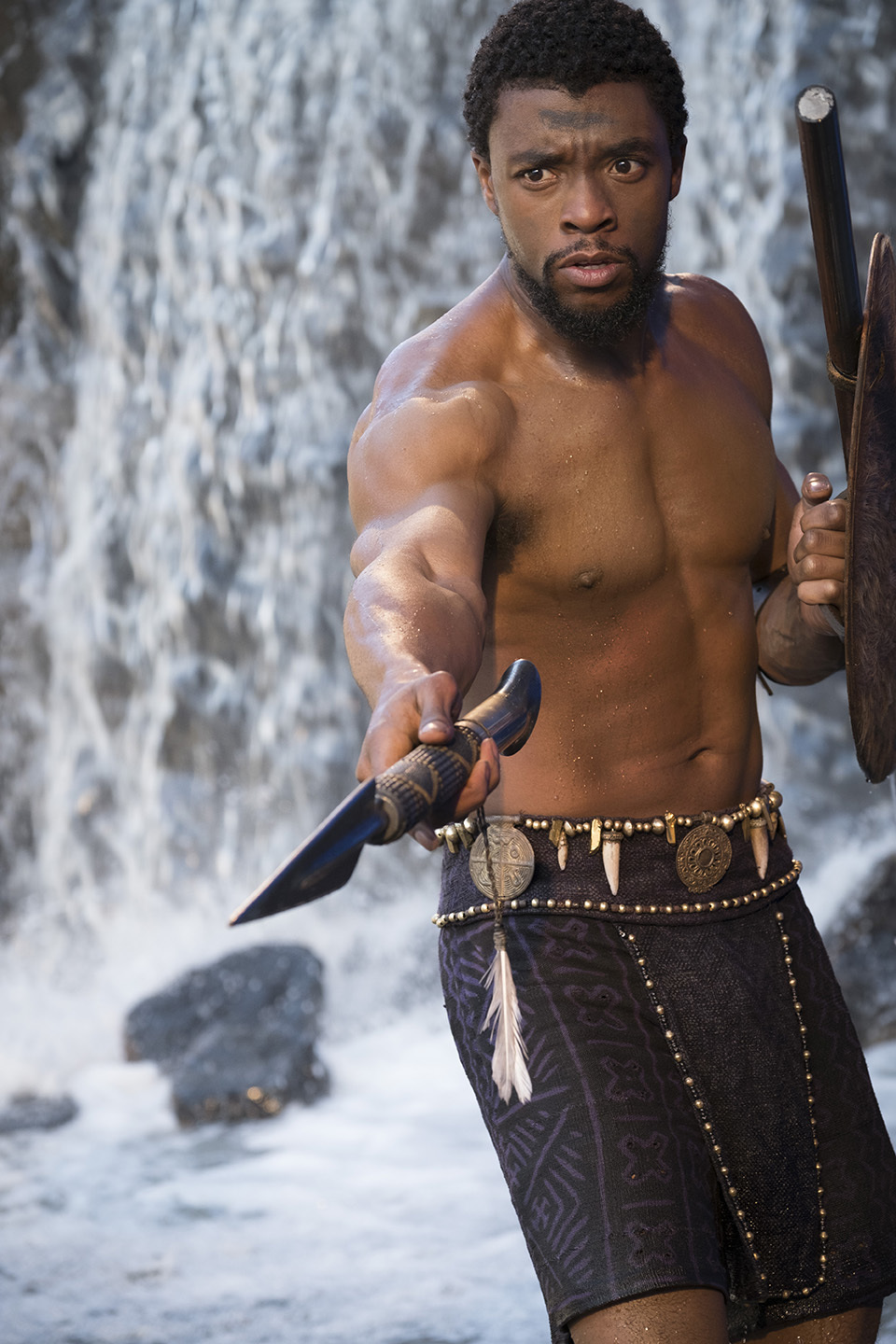
The filmmakers also made use of two massive bluescreens: a 1,300' x 40' stack of shipping containers nicknamed “Big Blue” and a 700' x 40' stack dubbed “Little Blue.” Morrison offers, “Because we’re on Earth and not floating through space, you can usually justify bluescreen spill as daylight, especially in day exteriors and interiors with big windows. Besides, when you spend all day looking at a greenscreen, you start to go a little crazy. It’s an unhealthy color, and it reminds the actors that they’re in a digital world. Geoff and I worked together to make the case for an all-bluescreen show.”
“We met with visual effects in prep and asked if we could stay with bluescreen [and eschew greenscreen], as we feel blue reflections are more in line with natural light sources,” Cornwall adds. “I tend to keep the bluescreen lighting off until we’re ready to shoot; this helps to better imagine the background, especially in night scenes.”
Throughout production, Morrison maintained a flexible approach with the use of lighting automation, which was programmed by Elton Hartney James on a High End Systems Full Boar 4 console. “With a smaller film, if the actors and the director block something different from what you planned, you have to clear the set to change the lighting,” the cinematographer notes. “When time is money, console operation is the most efficient way to go.”
Fortunately, she and Cornwall were granted ample time to prerig their sets and locations with rigging gaffer Tom Fendley. For some, such as the United Nations — in fact an Atlanta municipal building — they swapped out bulbs and added fixtures; for others — such as Atlanta’s High Museum of Art, which double for the British Museum — they placed everything from the floor. In either case, nearly everything was run through the console.
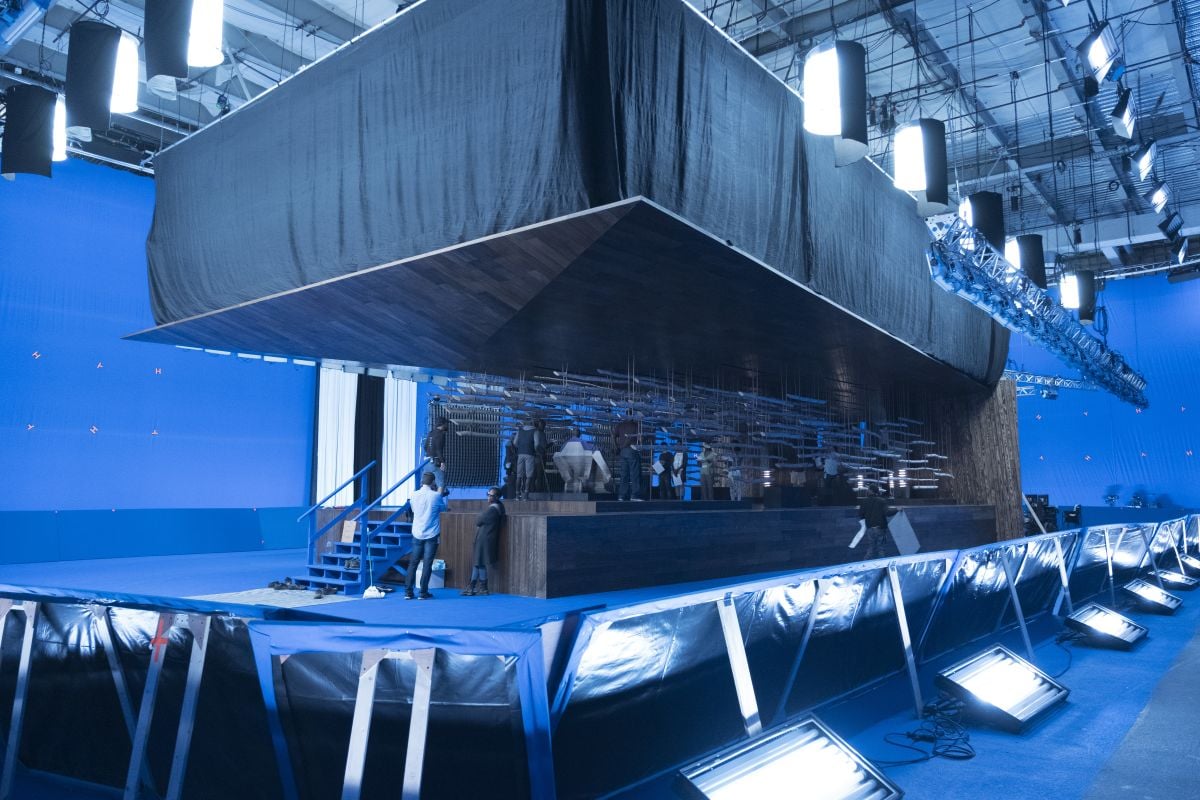
“On location, fixture foreman Phil Abeyta and the off-set dimming crew — the ‘nerd herd’ — would exchange house bulbs with color-correct dimmable LED bulbs from Quasar Science,” Cornwall explains. “The rigging team would track down which breakers controlled which fixtures, and they would then disconnect the wiring and feed our dimming cable to each circuit. Through wireless DMX and silent RatPac dimmers, we were able to control the level of the house lights.
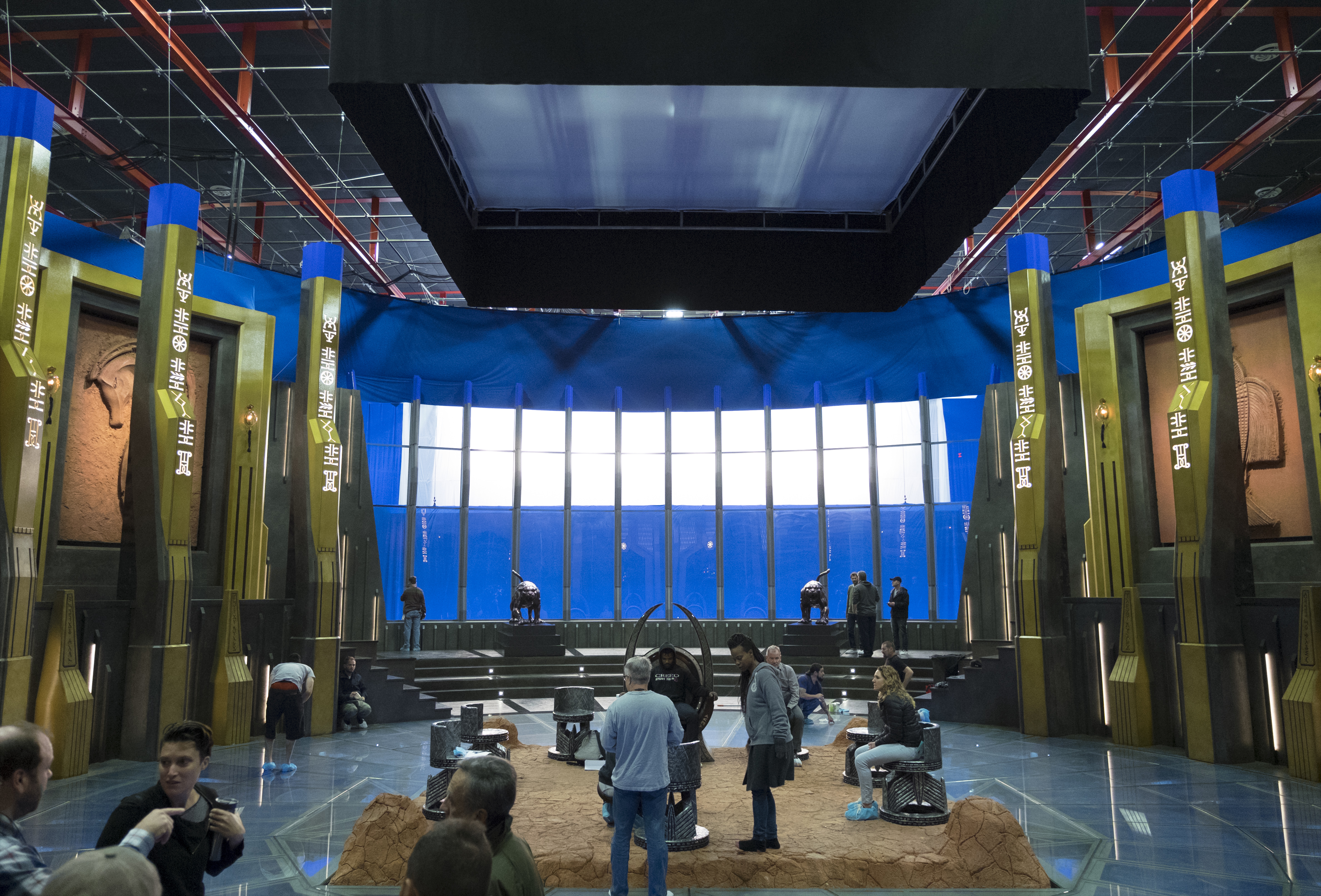
“The need to control as much from the console as possible is obviously about speed,” the gaffer continues, “but also, with films of this size that support a full-time second unit, recording light levels and color temperatures is important to maintaining continuity between units. All the lighting setups were recorded by slate number and stored on show files, which were shared with the second unit along with plots and notes. This was also important for reshoots.”
“If I could have this level of control every day, that would be the dream,” Morrison opines. “You truly get the ability to paint with light.”
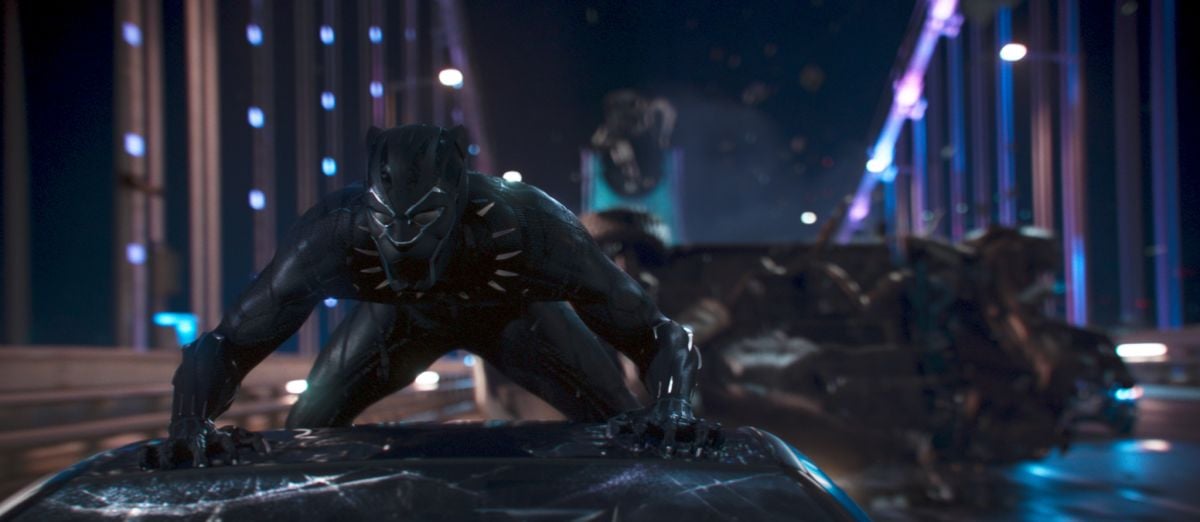
In addition to intimate, character-oriented moments, Black Panther roars with action. One of the film’s key action sequences is a nail-biting nighttime car chase between Klaue and Black Panther through the streets of Busan. Morrison conceptualized the sequence with Coogler, blending the intense subjectivity of The French Connection, the technical precision of Drive, and the rollercoaster thrills of Bullitt, then delegated its execution to 2nd-unit director Darrin Prescott and cinematographer Igor Meglic, ZFS, who captured the action over a nine-day shoot with Alexa XTs and Minis, Red Weapon Dragons, and Canon C300 Mark IIs. Prescott also helmed the Atlanta splinter unit, working with cinematographer Bruce McCleery.

An elaborate fight sequence inside a two-level casino was staged at Screen Gems. In this scene, T’Challa and Dora Milaje warriors Nakia (Lupita Nyong’o) and Okoye (Danai Gurira) are undercover at an underground casino in Busan when it’s raided by Klaue and his henchmen. Coogler and Morrison set out to cover the entire sequence in a “oner,” reminiscent of the long, fluid takes in Creed (photographed by Maryse Alberti; AC Dec. ’15). However, Morrison points out, “that film followed one character, while Black Panther is an ensemble,” and so ultimately the filmmakers opted to cover the scene in addition to getting their single take.
Technicians at CineMoves’ Atlanta facility custom-designed a quick-release system for Freefly Systems’ Movi Pro as well as a Spydercam rig, allowing A-camera operator P. Scott Sakamoto — who remote-operated an Alexa Mini on a Movi Pro carried by A-camera dolly grip Darryl Humber — to follow the action between the casino’s first and second floors, while B-camera operator Thomas Lappin and up to two additional 1st-unit camera teams covered the action with handheld XTs. Morrison had the casino lit almost exclusively from practicals that had been rewired by Abeyta’s fixtures department; the practicals were supplemented by overhead lighting: 12 Philips Vari-Lite VL1000s and six LRX Scorpions, with 4'x4' and 8'x8' hybrid Blanket lights diffused with Light Grid and soft egg crate providing the ambience.
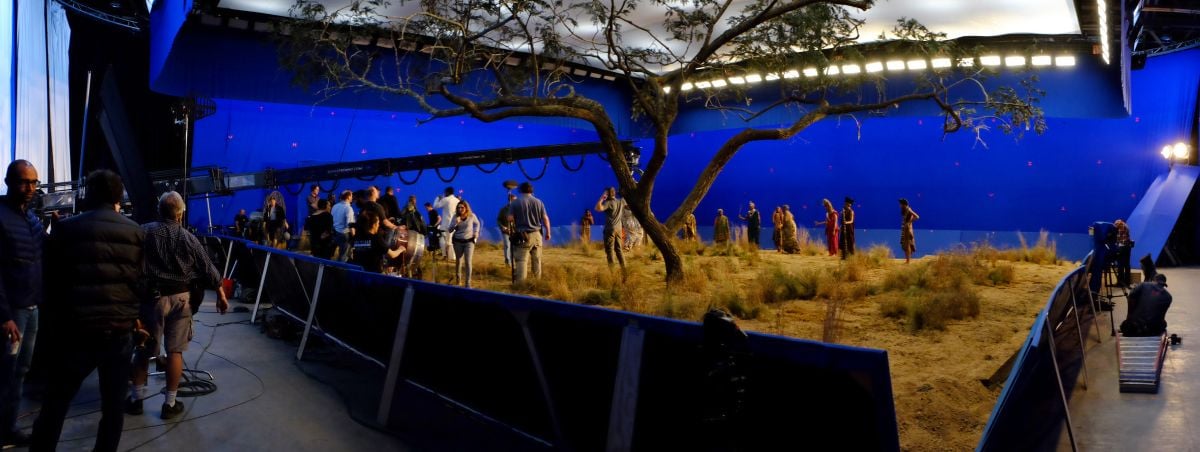
One of the production’s more challenging action sequences was set in the Wakandan jungle at night, but was photographed on a stage at OFS. Beachler’s art department used real trees and foliage to hide the factory’s walls and cement columns, creating the illusion of a lush African jungle.
In this scene, Black Panther uses an electromagnetic pulse to short-circuit a truck carrying a team of mercenaries; this plot point precluded the use of vehicle headlights as a motivating source in the dark clearing. Without enough room on the ground or in the low-hanging temporary lighting grid to set up a single moonlight source, Morrison relied on 112 Arri SkyPanel S60-Cs — eight units on 14 trusses — that could be used as needed, depending on which direction the camera was pointed, to imply a single source. “It was the first time I’d used so many ‘moons’ to look like one moon,” she says.
Additional moonlight ambience was provided by 10 8'x8' soft boxes fitted with Sourcemaker Hybrid LED tubes hung along the dirt road that wound through the forest, and 23 Mole-Richardson Vari-Space LEDs hidden in the trees. “Long linear lines of SkyPanels provided the deepest backlights for the trees,” Cornwall adds. “Arri L10s [were used] for harder backlights for the action scenes.” Martin Atomic 3000 LED strobes gelled with Full CTS and 1⁄4 Minus Green were used to create the mercenaries’ gunfire, which contrasted with the overall 4,000K ambience that Morrison and Cornwall established for the set. Smoke atmosphere and water sheen added texture, and visual effects extended the background where necessary.
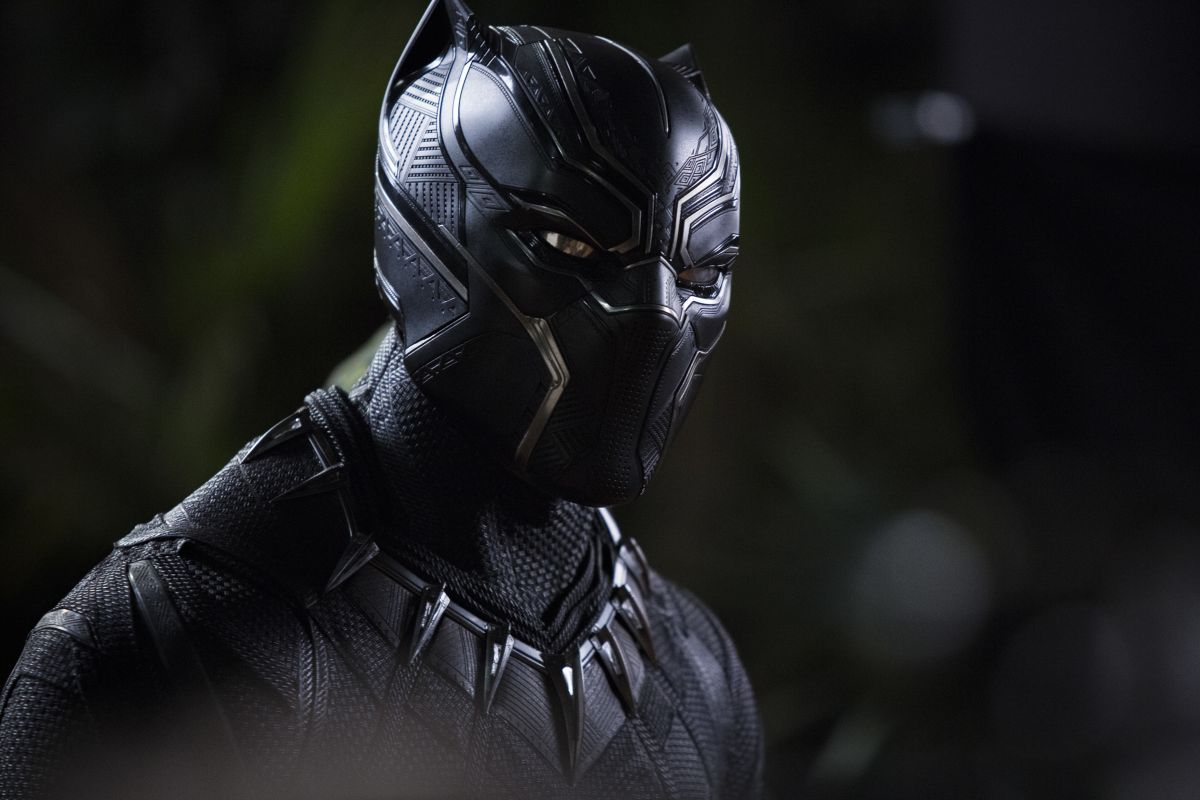
As Black Panther, T’Challa spends much of the movie in his “Panther habit,” a full-body suit of black armor. The habit design came from Marvel’s in-house art team led by Ryan Meinerding; Carter adapted it into an actual garment with input from Morrison. “Two of the things that I visually brought to the suit were its texture, incorporating a triangular Okavango pattern over its entire surface, and I chose a print material that would give it a sheen like that of a real panther,” Carter explains. “Okavango patterns, prints, and beadwork defined this look, and Rachel wanted to see them on camera as much as she could ahead of time.”
The suit’s reflective properties aided Morrison in low light but posed a challenge in the daytime, with backlight kicking off the material up to four stops over exposure. “It was about finding the best latitude for each scenario,” the cinematographer remarks. “Sometimes that meant netting down something offensive; other times it was a ‘special’ just to make the suit pop a bit better.”
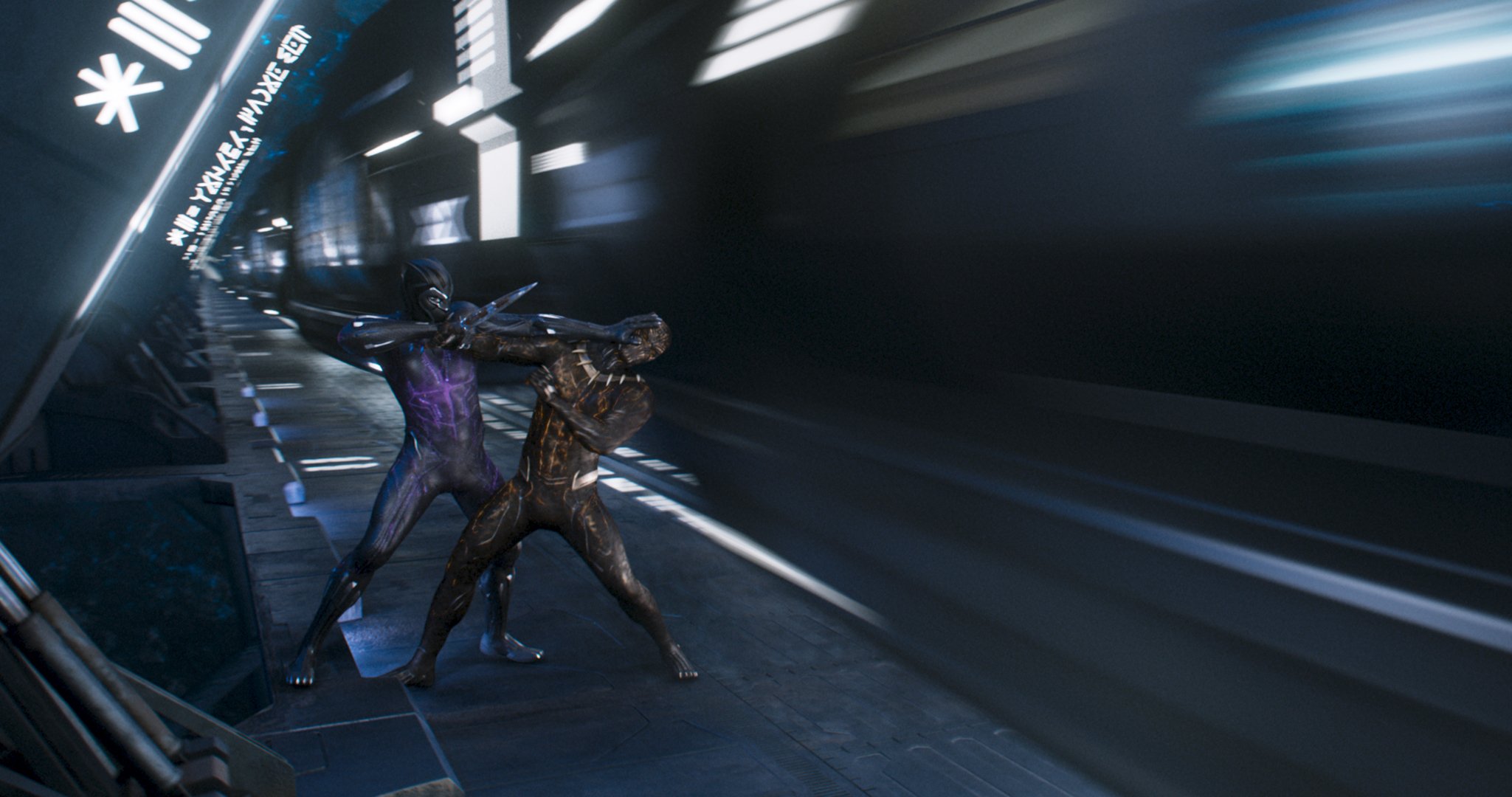
Halfway through the movie, Black Panther’s suit gets an upgrade that stores kinetic energy from a punch or a kick; the effect is visible in the form of a blue or purple source on the surface of the suit. The onscreen effects were accomplished in post, but Morrison had reference passes photographed in-camera using a custom LED vest designed by Abeyta and his crew so Baumann and his digital artists could see how the light affected the surrounding environment. “The goal is that when the actor is replaced with the visual-effects Panther suit, it’s under the same lighting conditions as the real suit,” Morrison remarks.
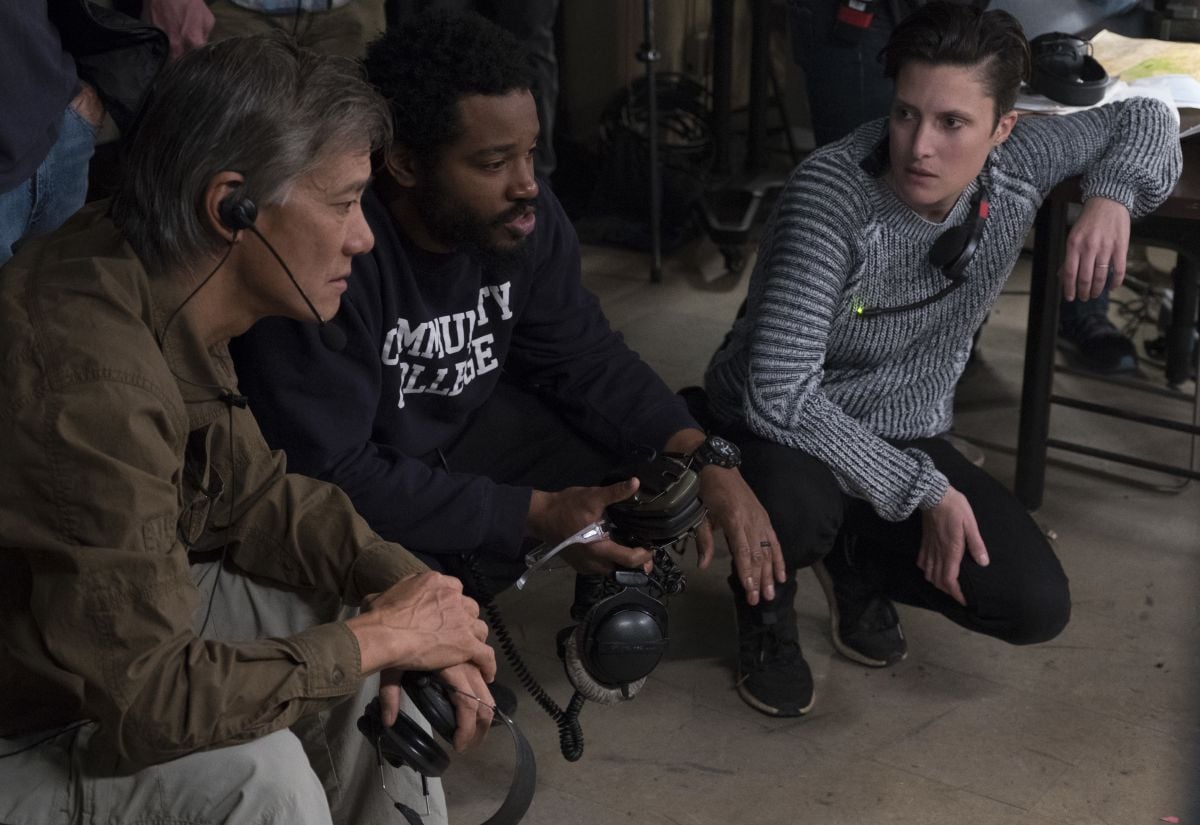
Dailies for Black Panther were handled by Élodie Ichter and Fergus Hally at Shed Atlanta using a custom ACES workflow LUT, and the final color grade was performed by Technicolor senior colorist Maxine Gervais working in 4K resolution on a FilmLight Baselight system in Los Angeles. Much of the grade involved blending the live-action and visual-effects elements together, and enhancing the work done on set, smoothing out the color and contrast between each shot using vignettes and power windows.
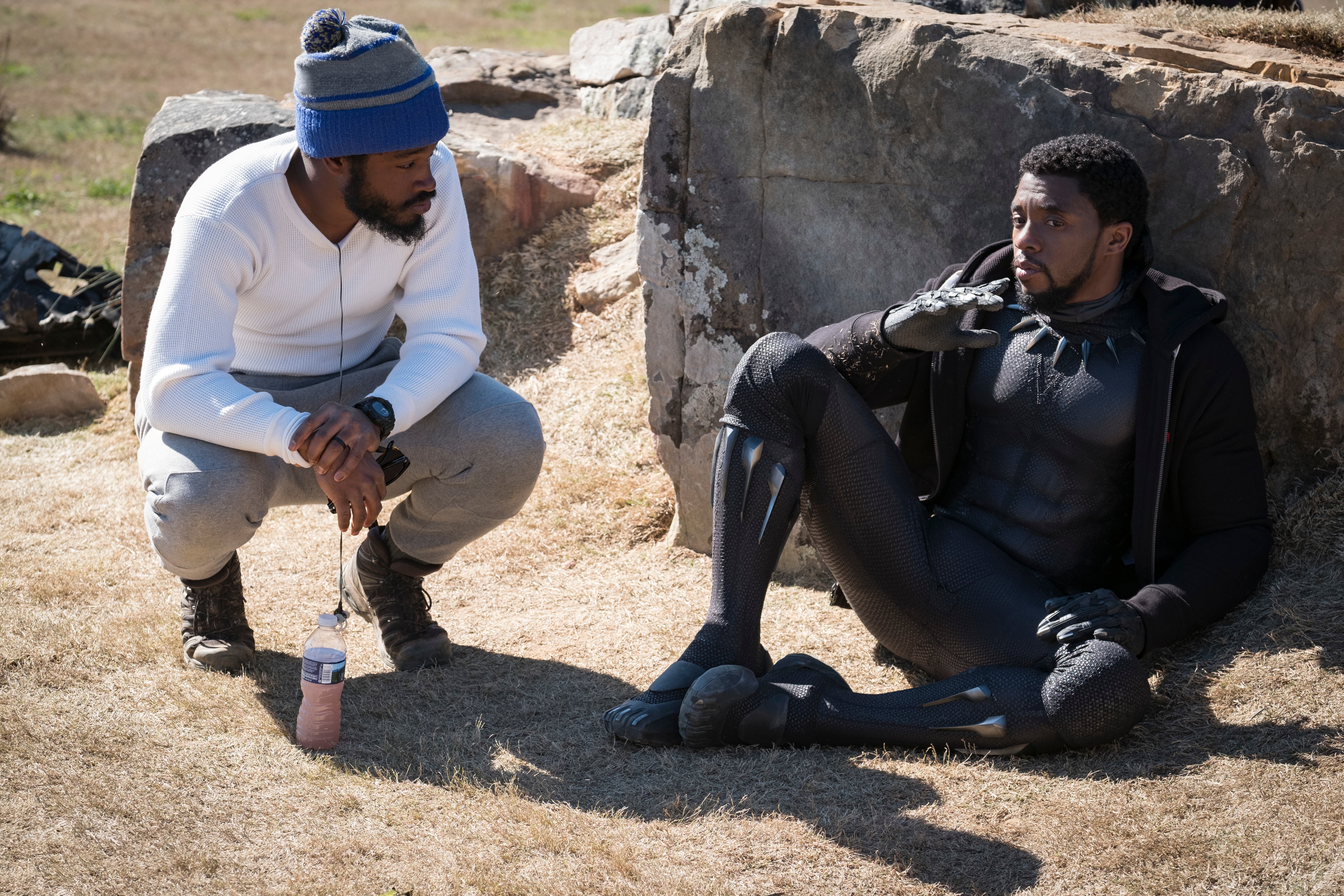
This was Gervais’ first collaboration with Morrison, and the colorist reports, “It was easy to get a feel for what Rachel was after. Overall, she’s sensitive to contrast and shadows, and she has a great eye for it.
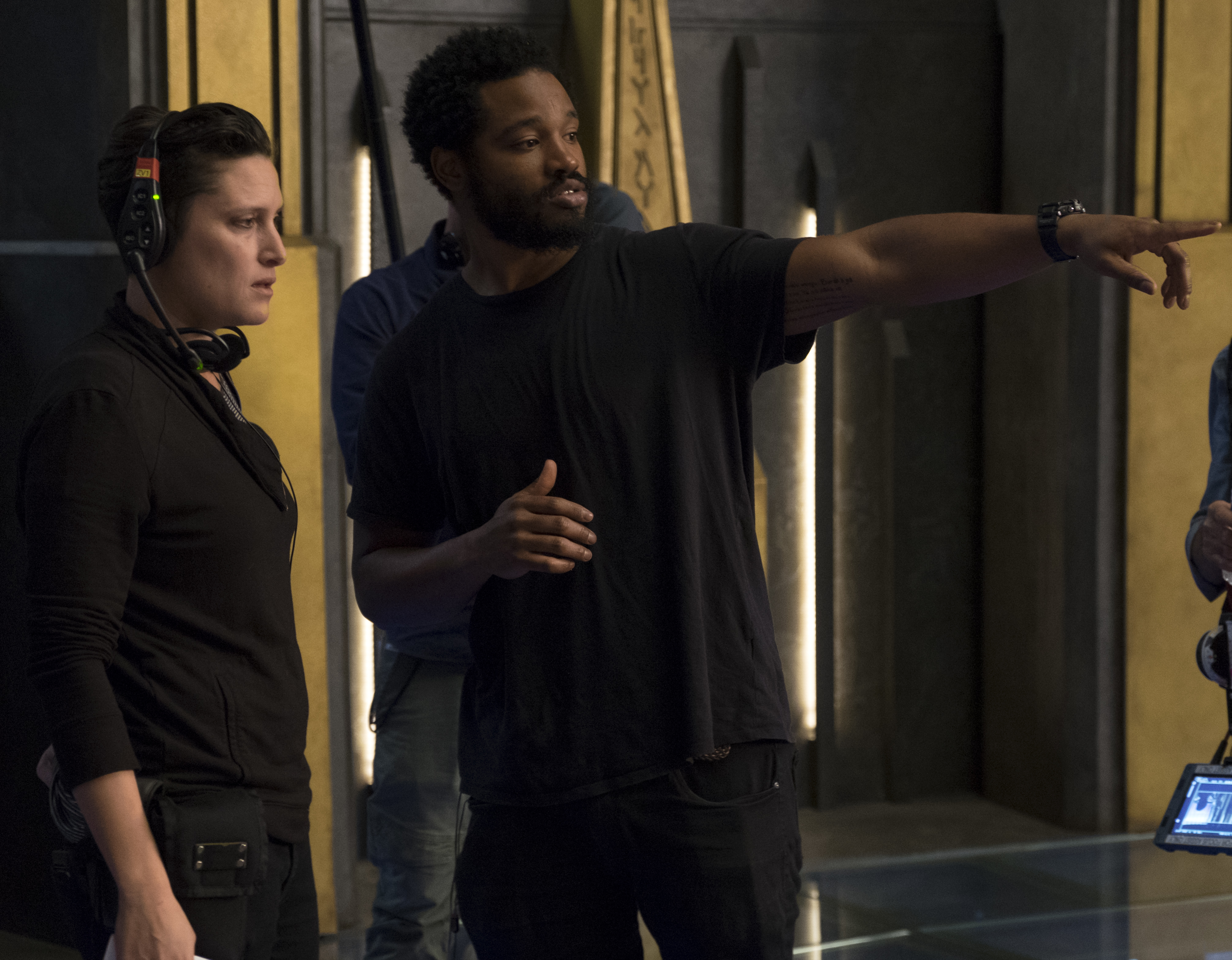
“This movie has a grand spectrum of looks, including some nice dark scenes,” Gervais adds. “We made sure this was all achieved while controlling skin tones, highlights and things like that. It’s always about using what’s there and enhancing it. I think the overall consensus [regarding the desired look] was ‘rich,’ and that’s how the movie feels: very rich and beautiful.”
Morrison regards the time she spent working on Black Panther as both exciting and instructive. “I was starting to feel like I was putting out a lot of the same fires on lower-budget projects, and this movie gave me an incredible opportunity to learn something new and to challenge myself again,” she offers. “The biggest gift was the chance to collaborate with Ryan and his team again, and of course I feel exceptionally fortunate to have gotten to play in the Marvel sandbox. While I don’t necessarily want to move in, I would love to visit it again someday.”
Technical Specifications
2.39:1
Arri Alexa XT, Mini; Red Weapon Dragon; Canon EOS C300, Mark II
Panavision Primo, Primo V






